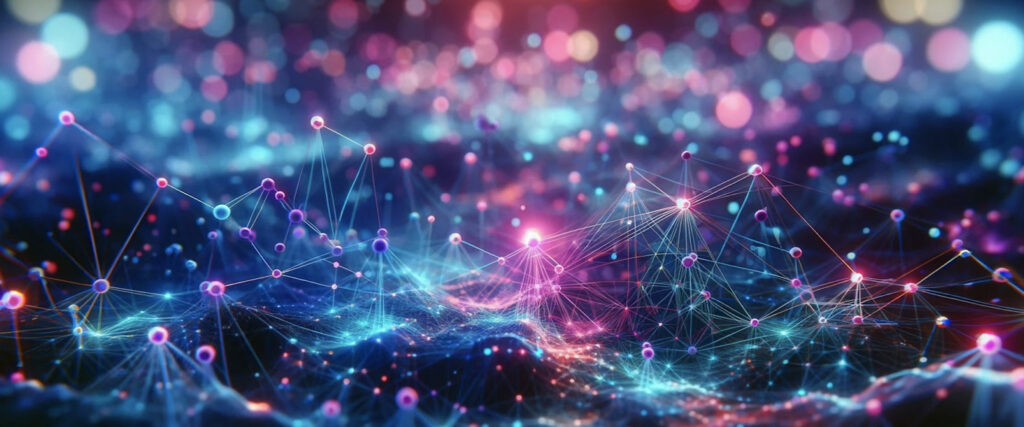LLM limitations
Initially, generative models like GPT-3 and BERT were revolutionary in their ability to generate coherent and contextually appropriate text. However, they often lacked the grounding in factual data, leading to potential inaccuracies in responses.
This limitation is directly associated with the fact that a Large Language Model (LLM)’s knowledge is confined by the training dataset.
An instinctive solution would be to train a model with a data set specific to the need. However, this approach has several drawbacks:
- You need to either have or be capable of generating a relevant data set to train the model, requiring skills in Data Analysis and Machine Learning.
- The training phase is resource-consuming.
- The new training will add extra data to the model:
- increasing the number of parameters and thus its size,
- adding a risk of conflict with data already present in the model.
- The new model will remain limited to the newly acquired knowledge.
While this solution can work, it is not viable in the long term.
RAG origins
To overcome these challenges, researchers and AI pioneers began exploring ways to enhance generative models by integrating retrieval mechanisms. This approach allows the AI to access and utilize vast external knowledge bases, combining the power of data retrieval with the creativity of text generation. This hybrid model was developed and refined by leading organizations in AI research, such as OpenAI, Facebook AI Research (FAIR), and others.
Retrieval-Augmented Generation (RAG) is gaining prominence as a transformative technology that enhances the capabilities of AI systems. By merging retrieval and generative processes, RAG provides AI with the ability to deliver responses that are not only accurate but also deeply contextual and relevant.
Today, RAG stands at the forefront of AI technology, with significant contributions from the open-source and academic communities.

Components of RAG: How It Works
RAG systems integrate embedding models, vector stores, advanced retrieval and generative models to produce responses that are both contextually rich and accurate. Here’s an in-depth look at how these components are constructed and deployed:
1. Embedding Model
Embeddings are one of the most versatile tools in Natural Language Processing, supporting a wide variety of settings and use cases.
Function: Transform complex objects like text, images, audio, etc into numerical representations: n-dimensional vectors.
- Chunks creation: Before being represented as numerical representations, objects are split into smaller parts. For instance, textual documents are parsed into paragraphs through the identification of paragraph terminations or upon reaching a character threshold. These small objects are called “chunks”.
- Semantic similarity: A vector embedding, often just called an embedding, is a numerical representation of the semantics, or meaning of your text. Two pieces of text with similar meanings will have mathematically similar embeddings, even if the actual text is quite different.. This is crucial for many use cases: it serves as the backbone for recommendation systems, retrieval, one-shot or few-shot learning, outlier detection, similarity search, paraphrase detection, clustering, classification, and much more.
Embeddings are the core basis to any Retrieval-Augmented Generation (RAG) systems. The idea behind the concept of RAG is to be able to have an LLM access custom documents that you provide (like analyst reports in your company) and improve its output based on that information. By converting documents and queries into embeddings, the Generative Model (LLM) is empowered to access and leverage the most pertinent data points, tailoring its responses to meet the user’s specific needs with enhanced relevance.
2. Vector Store Index
To support embedding concepts and to store them efficiently to be retrieved later by the Retrieval Mechanism, a specific type of database is required: Vector database or a Vector Store index.
Function: Vector Store Index turns all of your text into embeddings using an API from your Model provider; this is what is meant when we say it « embeds your text ». If you have a lot of text, generating embeddings can take a long time since it involves many round-trip API calls.
- Vector compression: Object transformation into numérical representation opens opportunities to compress data efficiently. Efficient compression is really important to keep the system fast and to avoid consuming too much storage space. Techniques such as Sparse vector are helpful for vector compression.
- Data distribution: As original objects can be huge, data (vectors) is spread between several servers. Approaches like data regions management combined with good indexation are important to keep the system working perfectly.
- Index optimisation: to help Retrieve mechanism to be efficient like for any databases, data indexes are really important. As vectors can be represented in several dimensions (several hundred of dimensions), having a good index mechanism is crucial.
Popular solutions for vector databases are Qdrant, ChromaDB, PGvector (ProstGre variant for vectors) or Weaviate.
3. Retrieval Mechanism
The retrieval mechanism is akin to an intelligent search engine that navigates vast datasets and knowledge bases to locate the most pertinent information. This component is crucial for grounding generative outputs in factual data.
Function: The retrieval component’s primary function is to fetch relevant information from large-scale repositories (vector databases) based on the input query. This involves several sophisticated processes:
- Query Understanding: The system interprets the user’s query to understand the context and intent.
- Information Retrieval: It uses techniques like vector space models, semantic search, or more advanced transformer-based models to find the most relevant documents or data segments based on the output of the Query understanding phase.
Technical Details:
Following techniques may vary depending on the Vector database engine employed in the RAG system. Here are techniques usually used.
- Indexing and Search:
- Inverted Indexing: A traditional method for efficient text search, where the system indexes terms or phrases and their locations within documents.
- Vector Search: Uses dense vector embeddings to find similar documents or passages by computing distances (e.g., cosine similarity) between query vectors and document vectors.
- Retrieval Techniques:
- BM25: A popular ranking function for text retrieval that scores documents based on the frequency and importance of terms.
- Dense Retrieval: Involves using dense vectors (learned embeddings) to capture semantic relationships between queries and documents, often leveraging neural networks.
Reranking: retrieved documents from vector databases are classified to match initial query input and intention. This is performed by a rerank model before sending such elements as context to the Generative Model.
4. Generative Model
The generative model is responsible for synthesizing the information retrieved by the retrieval mechanism into coherent, contextually appropriate responses. This component usually uses a LLM for that purpose.
Function: After the retrieval component has gathered relevant information, the generative model processes this data to generate a response that is fluent, contextually aligned, and informative. It operates by:
- Context Integration: Combining the retrieved data with the query context to form a comprehensive understanding.
- Natural Language Generation (NLG): Producing human-like text that is coherent and relevant to the query thanks to NLG capabilities of LLM.
Technical Details:
- Response Generation:
- Conditional Generation: The generative model conditions its output on the retrieved documents and the user query. Techniques like beam search or nucleus sampling may be used to generate diverse and high-quality responses.
- Attention Mechanisms: These allow the model to focus on specific parts of the retrieved data and query context while generating the response, ensuring that the output is relevant and coherent.
- Fusion Techniques: In RAG, fusion mechanisms combine retrieval and generative processes. There are two primary approaches:
- Late Fusion: The retrieved documents are appended to the input query, and the generative model generates the response in a single pass.
- Early Fusion: The generative model integrates the retrieved information at multiple stages during its processing, often through iterative attention mechanisms.
Building and Deploying RAG Systems
To build and deploy a RAG system effectively, several technical and infrastructural considerations need to be addressed:
1. Data Preparation and loading:
- Knowledge base preparation: Before being collected and stored into the RAG system, it is very important to be sure of what you will ingest into your system. This is crucial to be sure of the data quality. If data is not accurate, RAG system will provide inaccurate answers.
- Data Collection: Gather and preprocess relevant data from various sources, ensuring it is in a format suitable for loading, vector transformation and indexing.
2. Embeddings creation
- Vector Database deployment: Install vector database, depending on objects size, the database system is spread into several servers.
- Vector transformation: Data is split in chunks and transformed into vectors thanks to the embedding model. Each chunk (part of data) and its associated vectors are stored into the Vector database.
- Index Creation: Vector database will index vectors during their ingestions. It will also calculate all indexes to easily the context during the retrieval phase. This involves parsing documents, creating vector embeddings, and organizing data for fast lookup.
3. Integration and Fusion Mechanisms:
- Retrieval and Generation Integration: Develop systems that can seamlessly integrate retrieved information into the generative process. This might involve designing custom pipelines that handle the interaction between the retrieval and generative components.
- Attention and Fusion Strategies: Implement mechanisms that allow the generative model to effectively use retrieved data, such as attention layers that dynamically focus on relevant parts of the input.
4. Deployment and Scalability:
- Scalable Infrastructure: Deploy the RAG system on scalable infrastructure that can handle large volumes of data and queries. Kubernetes Platforms running on your preferred Public or private cloud provide the necessary resources and tools.
- Real-Time Processing: Ensure that the system can process queries and generate responses in real-time, leveraging technologies like Kubernetes for container orchestration and serverless architectures for scaling.
5. Monitoring and Maintenance:
- Performance Monitoring: Continuously monitor the performance of the RAG system to ensure it meets the required accuracy and response time benchmarks.
- Model Updates and Retraining: Regularly update the models and retrain them on new data to keep the system up-to-date with the latest information and improvements.

RAG offers several key benefits that make it a powerful tool across various applications:
1. Enhanced Accuracy:
- Data Grounding: By integrating retrieval mechanisms, RAG systems anchor generative outputs in verified and relevant data, reducing the risk of inaccuracies and improving the reliability of responses.
- Practical Impact: In sectors like healthcare and finance, where precision is critical, this grounding ensures that the generated content is trustworthy and based on factual information.
2. Improved Relevance:
- Contextual Precision: RAG systems provide responses that are closely aligned with the specific context and requirements of the query, enhancing the relevance and utility of the information.
- Example: In customer support, this means that responses are not only accurate but also directly address the customer’s issue, leading to higher satisfaction and more effective problem resolution.
3. Scalability and Efficiency:
- Handling Large Volumes of Data: RAG systems can efficiently process and retrieve information from vast datasets, making them suitable for applications requiring real-time responses and large-scale data handling.
- Business Case: For e-commerce platforms handling millions of customer interactions daily, RAG systems ensure consistent performance and quick responses, enhancing the overall user experience.
4. Adaptability and Flexibility:
- Dynamic Knowledge Updates: RAG systems can update their knowledge bases dynamically, allowing them to adapt quickly to new information without the need for extensive retraining.
- Real-World Application: In rapidly changing environments like financial markets or technology sectors, this flexibility ensures that the responses remain relevant and up-to-date.
Real-World Applications of RAG
1. Enhancing Customer Support:
- Interactive Help Desks: Companies deploy RAG-powered chatbots to handle a wide range of customer inquiries, offering precise and timely responses. This enhances customer satisfaction by reducing wait times and providing accurate information.
- Example: A global telecommunications company implemented a RAG system to assist customers with billing queries. The system retrieves specific billing policies and generates personalized responses, improving the efficiency and quality of customer interactions.
2. Advancing Healthcare Delivery:
- Patient Education and Support: RAG systems are instrumental in providing detailed information about medical conditions, treatments, and medications, helping patients make informed decisions about their health.
- Example: A large hospital network uses RAG to support its virtual health assistant. The system retrieves up-to-date medical information and generates personalized responses to patient queries, improving patient engagement and understanding.


3. Driving Financial Services:
- Automated Insights and Reports: In finance, RAG systems analyze and generate detailed reports on market trends, investment strategies, and financial performance, aiding analysts and investors.
- Example: An investment firm uses a RAG-powered system to generate weekly market reports. The system retrieves the latest financial data and news, synthesizing them into comprehensive reports that guide investment decisions.
4. Transforming Education:
- Personalized Learning Experiences: Educational platforms leverage RAG to provide tailored responses and learning materials, enhancing the educational experience by addressing individual student needs.
- Example: An online learning platform integrates RAG to offer personalized tutoring. The system retrieves relevant academic resources and generates custom explanations to help students grasp complex subjects more effectively.


5. Innovating E-commerce:
- Product Information and Recommendations: RAG enhances e-commerce platforms by generating detailed product descriptions and recommendations based on customer queries and preferences.
- Example: A leading online retailer uses RAG to power its virtual shopping assistant. The system retrieves detailed product specifications and reviews, providing customers with comprehensive recommendations tailored to their interests.
6. Optimizing Legal Services:
- Efficient Document Review and Analysis: Legal professionals use RAG systems to retrieve relevant legal documents and precedents, which are then synthesized into concise summaries or arguments.
- Example: A law firm employs a RAG system to streamline its document review process. The system retrieves relevant case laws and legal documents, generating summaries that help lawyers prepare for cases more efficiently.

The Future of RAG at Iguana Solutions
At Iguana Solutions, we are committed to staying at the cutting edge of AI technology. Our approach to RAG is grounded in continuous innovation and a deep understanding of our clients’ needs.
Research and Development:
- Leading the Charge: We invest in ongoing research to push the boundaries of RAG technology, ensuring that our clients benefit from the latest advancements in AI.
- Collaborative Efforts: Partnering with industry leaders and academic institutions, we continuously enhance our RAG capabilities to deliver top-tier solutions.
Client-Centric Solutions:
- Customized Implementations: We recognize that each client is unique. Our RAG solutions are tailored to fit the specific goals and challenges of our clients, providing bespoke AI services that drive success.
- Comprehensive Support: From initial design to deployment and beyond, Iguana Solutions offers end-to-end support to ensure the seamless integration and operation of our RAG-powered systems.
Innovative Applications:
- Expanding Horizons: We are constantly exploring new applications for RAG, from improving customer interactions to revolutionizing data-driven decision-making across industries.
- Thought Leadership: As pioneers in AI, we share our insights and expertise on how RAG can transform businesses, driving growth and innovation in an ever-changing landscape.


